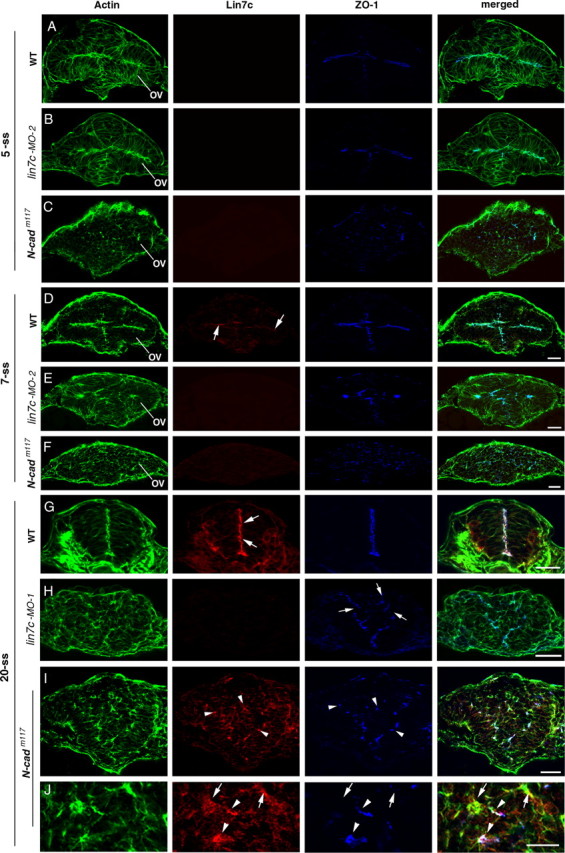Figure 4.

N-Cad is required to establish the apicobasal polarity of the neuroepithelium, and Lin7c is required to maintain the polarity. A–C, At the 5-ss, actin bundles and ZO-1 in the optical vesicle and brain neuroepithelium localized apically in wild type (A) and lin7c morphants (B). In contrast, in N-cadm117 mutants, the polarity is disrupted and ZO-1 foci are scattered in the neural tissue (C). D–F, At the 7-ss, apicobasal polarity is still largely present in lin7c morphants (E; anti-lin7c morpholino-2 was used.), although the apical surface of the neuroepithelia was not as even as in wild type (D). Arrows indicate the weak Lin7c expression at the apical surfaces of the neuroepithelium in wild type (D). In contrast, apicobasal polarity of neural cells is disrupted in N-cadm117 mutants (F). G–J, At the 20-ss, Lin7c (arrows), ZO-1 and actin bundles localize to the apical region of the elongated neuroepithelial cells of the wild-type neural rod (G). Unlike in wild type, apicobasal polarity of the neural rod is disrupted in lin7c morphants (H) and in 20-ss N-cadm117 mutants (I, J). While most Lin7c-positive subcellular structures (arrowheads) were also enriched with ZO-1 in N-cadm117 mutants, ZO-1 was not detectable in certain Lin7c-positive foci (J, arrows). OV, Optical vesicle. Anti-lin7c morpholino-2 was used for B and E; anti-lin7c morpholino-1 was used for H (see supplemental Fig. 1, available at www.jneurosci.org as supplemental material, for similar results obtained with anti-lin7c morpholino-2 for the 20-ss). Scale bars, 30 μm.
